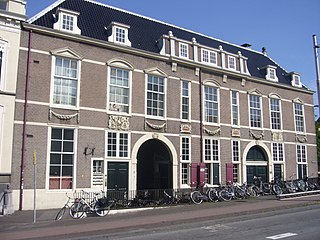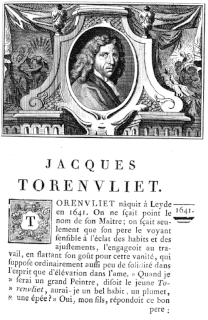
Abraham Bloemaert was a Dutch painter and printmaker in etching and engraving. He was initially working in the style of the "Haarlem Mannerists", but in the 16th century altered his style in line with the new Baroque style that was then developing. He mostly painted history subjects and some landscapes. He was an important teacher, who trained most of the Utrecht Caravaggisti, at least for a period.

Cornelis Floris or Cornelis (II) Floris De Vriendt was a Flemish sculptor, architect, draughtsman, medallist and designer of prints and luxury. He operated a large workshop in Antwerp from which he worked on many large construction projects in Flanders, Germany and Denmark. He was one of the designers of the Antwerp City Hall. He developed a new style, which was informed by Flemish traditions, the 16th century Italian renaissance and possibly the School of Fontainebleau. His innovations spread throughout Northern Europe where they had a major influence on the development of sculpture and architecture in the 16th and early 17th centuries.

Pieter Boel or Peeter Boel was a Flemish painter, printmaker and tapestry designer. He specialised in lavish still lifes and animal paintings. He moved to Paris, where he worked in the gobelin factory and became a painter to the king. Pieter Boel revolutionized animal painting by working directly from live animals in a natural setting. He thus arrived at representations of animals showing them in their natural, characteristic poses. He had many followers in France.

Abraham Storck, was a Dutch painter, who enjoyed a reputation for his marine paintings, topographical views and Italianate harbour scenes. Storck was also an outstanding draughtsman.
The Antwerp School was a school of artists active in Antwerp, first during the 16th century when the city was the economic center of the Low Countries, and then during the 17th century when it became the artistic stronghold of the Flemish Baroque under Peter Paul Rubens.

The Guild of Saint Luke was the most common name for a city guild for painters and other artists in early modern Europe, especially in the Low Countries. They were named in honor of the Evangelist Luke, the patron saint of artists, who was identified by John of Damascus as having painted the Virgin's portrait.

The Confrerie Pictura was a more or less academic club of artists founded in 1656 in The Hague by local art painters, who were unsatisfied by the Guild of Saint Luke there.

Jacob Toorenvliet (1640–1719) was a Dutch Golden Age painter of genre works.

David Pierre Giottino Humbert de Superville was a Dutch artist and art scholar. He was a draughtsman, lithographer, etcher, and portrait painter, and also wrote treatises on art, including the influential work Essai sur les signes inconditionnels dans l'art. His 1815 painting of the jurist and statesman Johan Melchior Kemper is now part of the collection of the Rijksmuseum in Amsterdam.

The Haarlem Guild of Saint Luke was first a Christian, and later a city Guild for various trades falling under the patron saints Luke the Evangelist and Saint Eligius.

Joris van Schooten (1587–1651) was a Dutch Golden Age painter and the uncle of the Leiden mathematician Frans van Schooten.

Joris Abrahamsz. van der Haagen was a Dutch Golden Age painter specialized in landscapes.

Lucas de Wael was a Flemish painter, art dealer and merchant. He was born in Antwerp and worked for some time in Genoa in Italy before returning to Antwerp. Here he continued his artistic and commercial activities. He is known for his landscapes and genre scenes.

Floris Gerritsz van Schooten or Floris van Schooten was a Dutch painter who practised in a broad range of still life genres including breakfast pieces, fruit pieces, market scenes and large kitchen pieces.

The Utrecht Guild of Saint Luke refers to two artist collectives in Utrecht (city); the old Catholic Zadelaarsgilde dating from the Middle Ages, as well as the newer Sint Lucas Gilde established in 1611. The first collective was for a number of trades that were connected to the art industry, though the smiths had their own guild called the "St. Eloyen" guild. The second collective was founded for the oil painters after the Protestant Reformation. The Zadelaarsgilde fell under the patron saint Luke the Evangelist and the St. Eloyen guild fell under Saint Eligius.

Alexander Hugo Bakker Korff, was a 19th-century Dutch genre painter.
The following is a timeline of the history of the municipality of Leiden, Netherlands.

Jan Elias Kikkert was a Dutch lithographer and watercolorist, best known for his street scenes of Leiden.

Willem Kerricx or Willem Kerricx the Elder was a Flemish sculptor active in Antwerp. His works comprise mostly sculptured church furniture, individual sculptures, both portrait busts as well as statues of saints for churches and funerary monuments. His style shows the transition from the highly dramatic expressiveness of the Antwerp late Baroque towards a more gracious and elegant Rococo style. He operated a large workshop in Antwerp which was continued by his son into the middle of the 18th century.
Olga van Iterson-Knoepfle (1879-1961) was a Dutch artist.

















